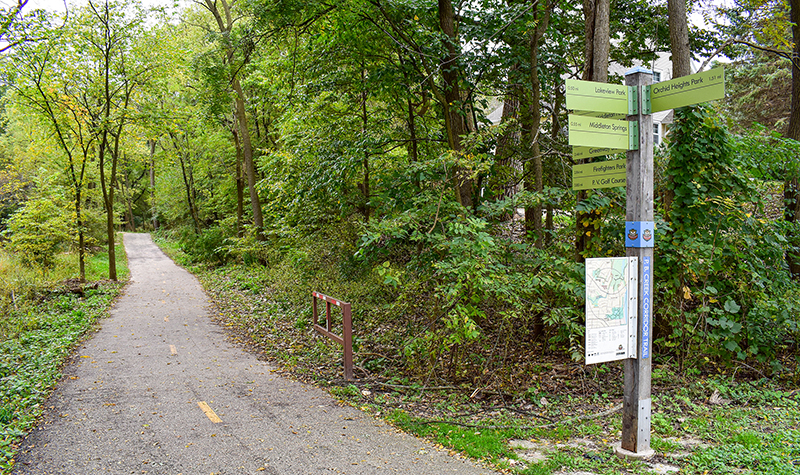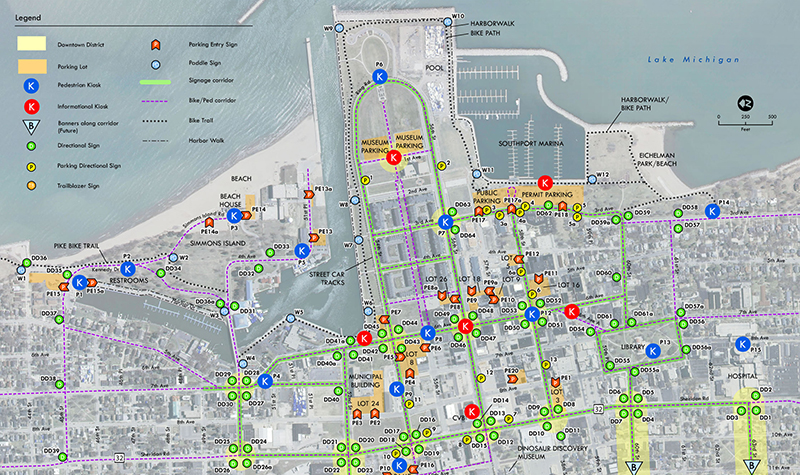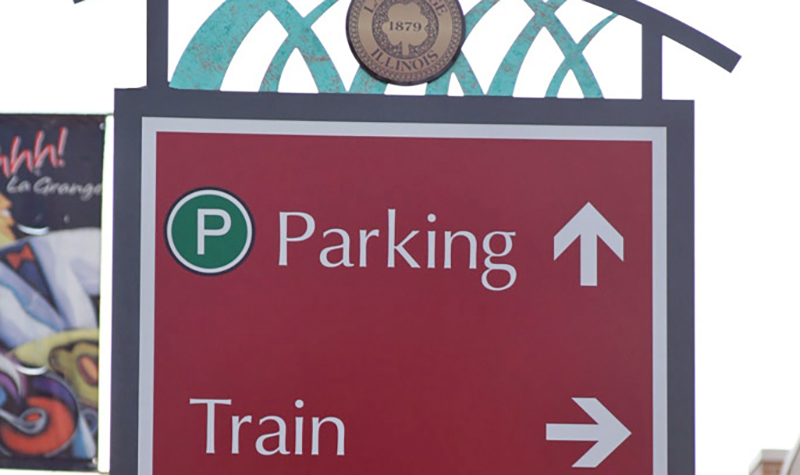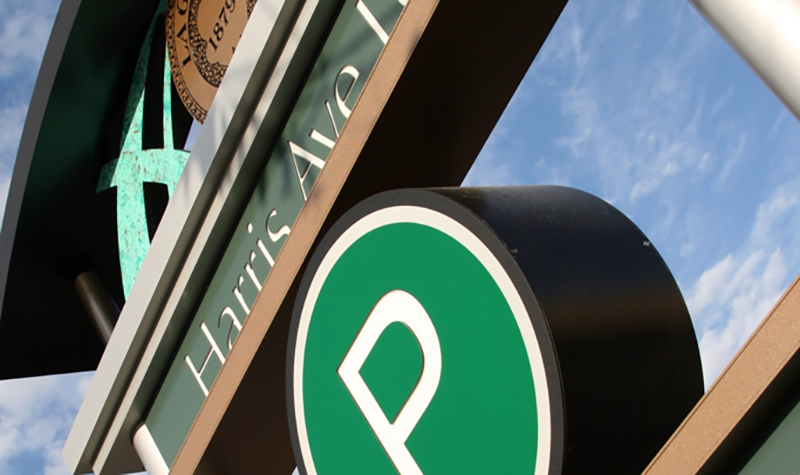Wayfinding systems provide easy way for visitors to get from Point A to Point B
 By David Land, LEED AP
By David Land, LEED AP
If you’ve ever been lost in the woods, spent hours searching for your car in a municipal parking garage, or stumbled upon every building on campus except the one in which your first class of the semester is meeting, you know the importance of wayfinding.

About the Expert:
David Land, LEED AP, has collaborated with an array of local, national, and international consultants, client teams, and sector experts to steward detailed design and implementation. David has been involved in planning, design, and construction administration for numerous complex site projects spanning civic, residential, retail, educational, brownfield, and sports and recreation spaces.
What Is Wayfinding?
Wayfinding is a catchall term that encompasses a wide range of issues involved in directing visitors from physical locations they know well to and through locations that are new to them or that have undergone significant changes since last they visited.
Effective wayfinding is critical to the success of any built or natural environment. That includes everything from a local high school to a large state university; from a local medical clinic to a regional hospital complex; from a downtown department store to the Mall of America; from a local train depot to New York’s Grand Central Station; from a municipal playground to Yellowstone National Park.
Regardless of the size and type of an environment, the development of a system that quickly communicates available amenities and features, including their locations within that environment, is key to ensuring visitor satisfaction and safety.
Ayres Wayfinding Projects
In Kenosha, WI, Ayres landscape architects developed a wayfinding system that begins with trailblazer signs directing travelers on nearby Interstate 94 to the city’s downtown along the banks of Lake Michigan. Once downtown, visitors benefit from a coordinated, community-wide signage system that guides them to points of interest and need, including city-owned parking lots. Informational kiosks throughout the downtown area are stocked with maps and other informational literature designed to enhance visitors’ Kenosha experience.

Similar Ayres projects include the development of coordinated wayfinding systems for the Central Business District in La Grange, IL, and for the new pedestrian mall along the banks of the Chippewa River in the center of campus at the University of Wisconsin-Eau Claire.
And recently Ayres developed guidelines for an enhanced wayfinding system for planned improvements at Sinks Canyon State Park near Lander, WY.
Context Is Key
The Sinks Canyon project points to an important consideration in any effective wayfinding system: context. Ayres’ landscape architects work with other professionals in developing signage systems that support each project’s unique overall mission.
Picking the proper type and quality of materials for a wayfinding system is one of many important considerations. For a rugged, outdoor environment like Sinks Canyon, signs should not be too expensive, as they may be prone to vandalism and the harsh effects of extreme weather.

In an urban, business setting, more expensive materials might be more appropriate so that the wayfinding system establishes a desired brand and projects an appropriate image. Graphic design considerations — including the selection and coordination of fonts, colors, sizes, and materials — are key in developing signage to meet those overall goals while simultaneously meeting visitors’ needs for direction through and understanding of the environment they are in.
Psychology Plays a Role
Because all wayfinding projects include some degree of education and interpretation, there are important psychological aspects involved in enticing visitors to stop and read signs.
Location is a key consideration. Signs should not be placed in uncomfortable locations – places that are too hot or too cold, too crowded or too remote, too high or too low, etc.
Using appropriate language and graphic elements also is key to an effective wayfinding system. It’s important that the interests and abilities of the intended audience for signage and other elements are carefully considered.

And, of course, the requirements of the Americans with Disabilities Act also affect considerations related to wayfinding.
Technology Plays a Larger Role
Computer and online technology are becoming an increasingly important aspect of enhanced wayfinding systems.
Once physical signs have directed visitors to a particular location, downloadable apps can link those visitors to a myriad of sources of online information designed to augment their experience.
In a museum or a zoo, for example, apps might link visitors to videos and other graphical sources of information about the exhibit in front of them. In a restaurant, guests might download coupons for the day’s luncheon special. In a hospital, apps might provide information for patients to consider while waiting for their appointments to begin. The possibilities are endless.
Computer and online technology also are proving to be an important way to curtail the costs involved in updating and replacing wayfinding signage when the inevitable changes occur in any location.
For more information regarding wayfinding or for more general questions, please reach out to David Land or any of our Development Services experts.

Post a comment: